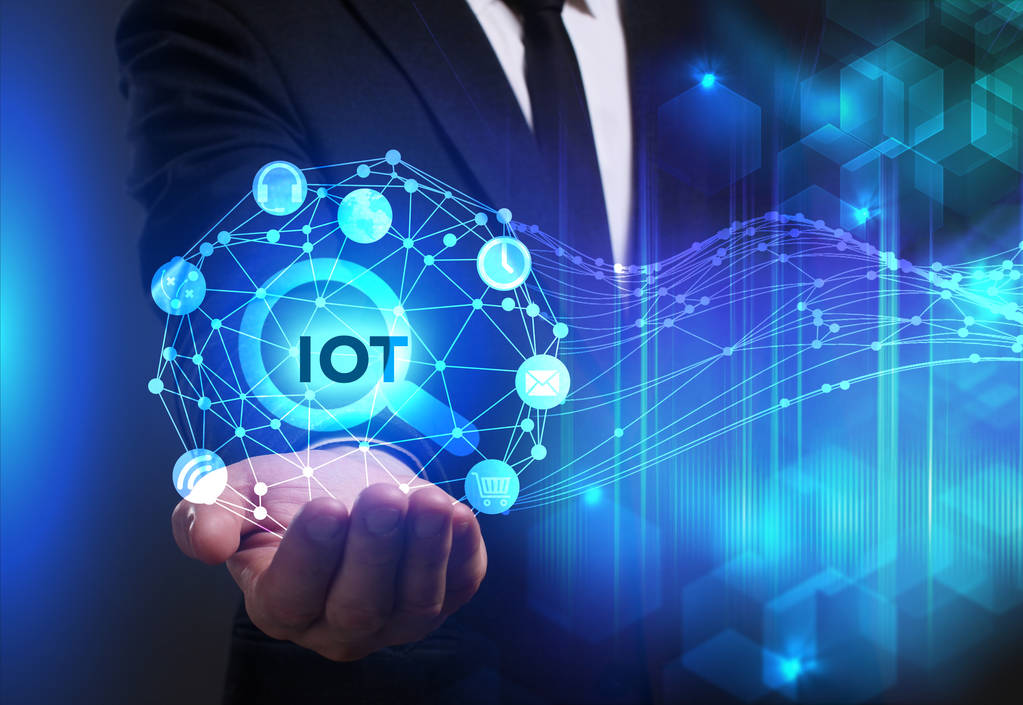
main points:
· According to recent statistics, the number of connected IoT devices is expected to exceed 35 billion by 2025, with manufacturing becoming one of the major industries to benefit from this surge.
· IoT devices generate a huge amount of data. Storage, managing, and processing these data requires a strong infrastructure.
· The success of the IoT is not just about the implementation of smart devices and sensors in manufacturing facilities. The key is to effectively manage, organize, and utilize the generated data.
In pushing the limits of the Internet of Things, Microsoft Azure stands out. Azure's comprehensive IoT solutions suite enables organizations to seamlessly connect, monitor, and manage their IoT assets.
In the digital revolution, the Internet of Things (IoT) concept has become a force for change that has revolutionized all industries. The Internet of Things has had a profound impact on manufacturing and has become the cornerstone of the Industry 4.0 movement. This article will delve into the evolution of the Internet of Things, the importance of IOT data, and how Microsoft Azure is at the forefront of promoting the adoption of IOT to reshape the manufacturing landscape.
The Evolution of the Internet of Things: from concept to reality
The Internet of Things (IoT) emerged as a visionary idea in the late 20th century, when interconnected devices seemed to come directly from science fiction. The concept of everyday objects communicating with each other, sharing data, and collaborating to improve our lives is a futuristic concept that inspires the imagination of innovators and thinkers. It is a tantalizing glimpse of a world in which technology can transcend its traditional boundaries and fit into the fabric of our everyday lives.
As time went on, the beautiful idea gradually became a reality. The development of the first network device that can communicate with each other lays the foundation for the Internet of Things. These early experiments and prototypes paved the way for the interconnected ecosystems of devices, sensors, and machinery.
Today, the vision of the Internet of Things has not only been realized, but has been transformed into a dynamic network across industries and sectors. The advent of smart devices, precision sensors, and advanced communication protocols has led to a new era of connectivity. The era, often called Industry 4.0, marked a paradigm shift in manufacturing, with the seamless integration of digital technology into all aspects of the production process.
The Internet of Things is facilitating the shift as a key in connecting physical devices to digital systems. It's no longer just about a single device; it's about creating an ecosystem that allows devices, sensors, machines, and people to collaborate in real time, exchanging information, insights, and instructions. This symbiotic relationship between the physical and digital fields redefines how the industry operates, how its products are made, and how companies interact with their customers.
The Internet of Things has evolved from a remote concept to a component of Industry 4.0, highlighting the continuous progress of technological progress. It demonstrates the ability to turn the imagination into innovation, transcend boundaries and unleash new possibilities. As the Internet of Things continues to evolve, it will undoubtedly shape our world, improve efficiency, drive innovation, and push us into a future where the boundaries between the physical and digital fields have become blurred. The potential for change is unlimited.
Internet of Things data: the cornerstone of Industry 4.0
In the bustling world of Internet of Things devices, sensors and connected machinery, a treasure of great potential is —— Internet of Things data. This data does not just involve the amount it has generated, its real value lies in its ability to illuminate the path to unprecedented insights and data-driven decisions. As the industry 4.0 wave is reshaping the manufacturing landscape, the sensible use of this data lays the stage for a new era of operational excellence and innovation.
IoT data is like an uncarved diamond, waiting to be mined and polished to show its luster. The data generated by countless Iot devices allows us to understand the complexity of the manufacturing process, the behavior of the device and the performance of the system. But the importance is not just limited to the original numbers. The ability to identify patterns, detect abnormalities, and predict trends really sets these data apart.
In a modern business environment, data is more than just a commodity. This is a strategic asset. Organizations invest heavily in data analysis and business intelligence to extract viable insights from their data reserves. With its real-time performance and accuracy, IoT data has positioned itself as the cornerstone of this data-driven revolution. From forecasting maintenance needs and optimizing supply chains, to improving quality control and enhancing customer experience, the use of IoT data is unlimited.
Let's explain this phenomenon with some numbers. A report by McKinsey suggests that the economic impact of IoT data could range from $3.9 trillion a year to a staggering $11.1 trillion a year by 2025. This is a huge shift in the way the industry operates and in the way value is created. However, it must be recognized that the act of collecting data is merely a beginning. The real potential for change lies in our ability to leverage, analyze this data and translate it into meaningful insights to drive strategic decisions.
As we stand on the brink of a data-driven future, it is clear that IoT data is not just a byproduct of interconnected devices, it is the lifeblood of Industry 4.0. The ability to extract value from this data is not just an option, in this age when data is progressive money, it is necessary for survival and development. Let's explore this topic more deeply.
Beyond the hype: to define the success of the Internet of Things
As mentioned above, the core of the IoT impact is how organizations manage, plan, and unleash the potential of massive data it generates. This is independent of the number of sensors or devices deployed, but how to effectively translate the data into actionable insights.
In the era of data-driven decision-making, the ability to leverage IoT data is a significant factor in distinguishing booming businesses from those merely caught mere hype. IoT devices generate an amazing amount of data, and huge amounts of information can change processes, enhance customer experience and drive innovation. However, to tap this potential, a strategic approach to data management must be adopted.
Imagine a scenario where companies invest heavily in iot devices and infrastructure, but struggle to derive value from the data generated. This situation is more than just a possibility, a harsh reality for those who ignore the crucial role of data management. Without effective data collection, storage, analysis, and application strategies, the transformative forces of the Internet of Things are still constrained by barriers to unstructured information. The process from data collection to actionable insights is a delicate process that involves the adoption of advanced analytical tools and machine learning algorithms and fostering a culture of emphasis on data-driven decision-making. Companies that master this process can unleash the potential to improve efficiency, optimize processes and gain a competitive advantage in the market.
Effective data management involves managing IoT data, building the data for analysis, and seamlessly integrating it into business processes. It involves the implementation of cross-functional analysis, providing insights not only for a department, but also for all aspects of the enterprise. Whether it's about optimizing production processes, improving supply chain efficiency, or even shaping product development, the value of IoT data goes beyond isolated islands.
In this case, those who really succeed do not just see the Internet of Things as a buzzword, but rather as a strategic priority. They recognize that if they cannot manage ioT data and use it for business intelligence and cross-functional analysis, then their investment in the Internet of Things is just a fashion. To ensure the success of the Internet of Things, businesses must foster a culture that supports data-driven decision-making. It facilitates collaboration between data scientists, engineers, analysts, and business leaders to extract insights that drive innovation and growth. This requires not only technology, but also a shift in thinking, putting data at the heart of strategic planning and execution.
As the digital environment evolves, the demand for effective IoT data management will only intensify. Companies that understand this reality will unlock the potential of their ioT data through careful planning and strategic application to reshape the future of Industry 4.0. Thus, while IoT devices and sensors form the foundation, the data they generate builds a fice of success.
Contact: Qui
Phone: 18146178586
Tel: 18146178586
Email: qui@zonewu.com
Add: 1501-3, Building F03, Phase III, Software Park, Jimei District, Xiamen City, Fujian Province, China
